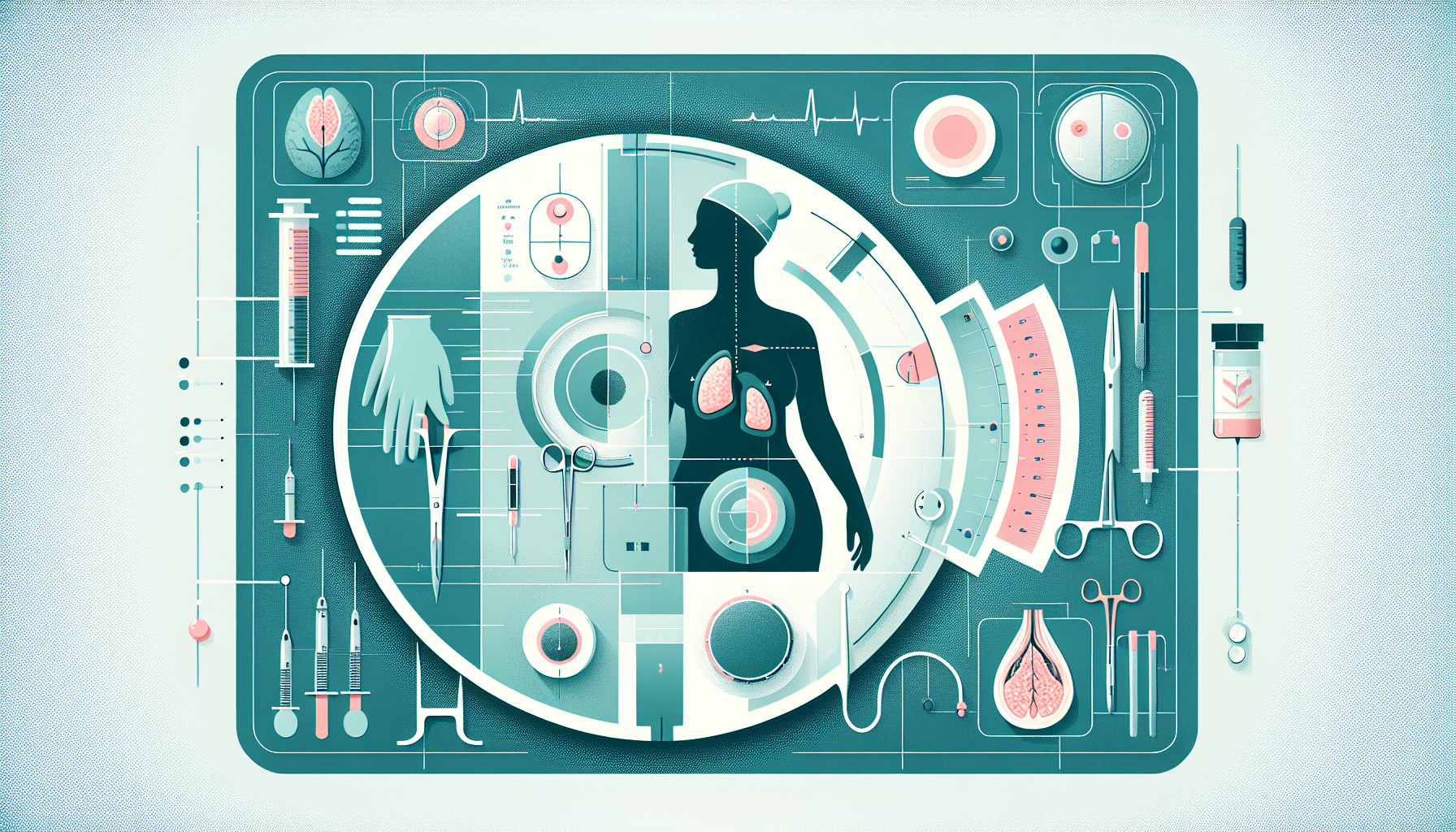Our Summary
This research paper describes a new technique for performing mastectomies, a common surgery for breast cancer. Traditionally, an assistant is needed during the surgery to pull back the skin using a tool called a retractor. However, this new technique uses a self-retaining retractor system, which includes a specially-designed ring and elastic hooks. This system keeps the skin pulled back at a constant tension during the entire surgery. This technique was introduced at a breast center in 2008 and has shown to be as effective as traditional methods in terms of skin damage and surgery time. The ring and hooks are also relatively affordable. Therefore, this new method is simple, flexible, and effective.
FAQs
- What is the new technique for performing mastectomies described in this research paper?
- How does the self-retaining retractor system work in this new mastectomy technique?
- How does the effectiveness of this new method compare with traditional mastectomy methods in terms of skin damage and surgery time?
Doctor’s Tip
A doctor may tell a patient undergoing a mastectomy to ask about the possibility of using a self-retaining retractor system during their surgery. This technique can help minimize skin damage and reduce surgery time, making the recovery process smoother. It is always important to discuss all available options with your healthcare provider to ensure the best possible outcome for your surgery.
Suitable For
Patients who are recommended for mastectomy typically include those with:
Breast cancer: Mastectomy is often recommended for patients with breast cancer, especially those with large tumors or multiple tumors in the breast.
Genetic mutations: Patients with a genetic mutation such as BRCA1 or BRCA2, which significantly increases the risk of developing breast cancer, may be recommended for a preventive mastectomy.
Previous radiation therapy: Patients who have previously undergone radiation therapy to the breast for another cancer may be recommended for mastectomy as radiation can increase the risk of developing a second primary breast cancer.
High risk of recurrence: Patients with a high risk of breast cancer recurrence, such as those with aggressive types of breast cancer or a history of multiple cancer recurrences, may be recommended for mastectomy.
Ductal carcinoma in situ (DCIS): Patients with DCIS, a non-invasive form of breast cancer, may be recommended for mastectomy if the DCIS is large or widespread.
Failed previous breast conservation surgery: Patients who have previously undergone breast conservation surgery (such as lumpectomy) and have had a recurrence of breast cancer in the same breast may be recommended for mastectomy.
Patient preference: Some patients may choose to undergo mastectomy as a preventive measure or as a personal preference, especially if they have a strong family history of breast cancer or are at a high risk of developing the disease.
Timeline
Before mastectomy:
Diagnosis: The patient receives a diagnosis of breast cancer and discusses treatment options with their medical team. If a mastectomy is recommended, the patient will undergo further tests and consultations to prepare for the surgery.
Pre-operative preparation: The patient will meet with their surgeon to discuss the procedure, potential risks, and expected outcomes. They may also undergo imaging tests and medical clearance to ensure they are fit for surgery.
Surgical planning: The surgeon will determine the type of mastectomy (e.g. simple, skin-sparing, nipple-sparing) that is most appropriate for the patient based on their specific case and preferences.
After mastectomy:
Recovery: The patient will wake up in the recovery room after the surgery and may stay in the hospital for a few days depending on the type of mastectomy and any complications.
Pain management: The patient will be given pain medication to help manage any discomfort or pain after the surgery.
Physical therapy: The patient may be referred to a physical therapist to help with exercises and stretches to improve range of motion and strength in the chest and arm area.
Emotional support: The patient may experience a range of emotions after the surgery, and may benefit from counseling or support groups to help cope with the changes to their body.
Follow-up appointments: The patient will have regular follow-up appointments with their surgeon to monitor healing, discuss pathology results, and plan for any additional treatments such as reconstruction or adjuvant therapy.
Overall, the experience of a mastectomy is a challenging and emotional journey for the patient, but with proper care and support, they can navigate through the process and work towards recovery and healing.
What to Ask Your Doctor
- What are the potential risks and benefits of mastectomy surgery?
- How will the self-retaining retractor system impact my recovery time and scarring?
- Are there any additional costs associated with using the self-retaining retractor system?
- How does this new technique compare to traditional methods in terms of effectiveness and outcomes?
- What experience does the medical team have with using the self-retaining retractor system for mastectomies?
- Are there any specific precautions or aftercare instructions I should follow with this new technique?
- How will the self-retaining retractor system affect my overall surgical experience and comfort during the procedure?
- Are there any potential complications or limitations associated with using the self-retaining retractor system for mastectomy surgery?
- Can you provide any additional information or resources about this new technique for mastectomies?
Reference
Authors: Co M, Kwong A. Journal: Surg Today. 2017 Feb;47(2):265-269. doi: 10.1007/s00595-016-1390-9. Epub 2016 Jul 27. PMID: 27465473
